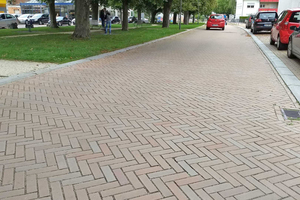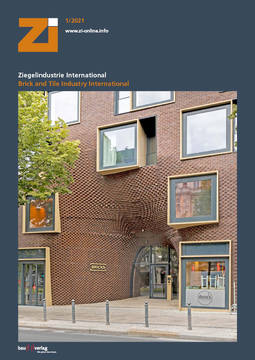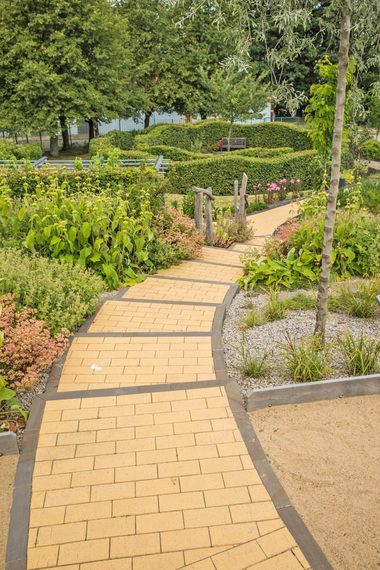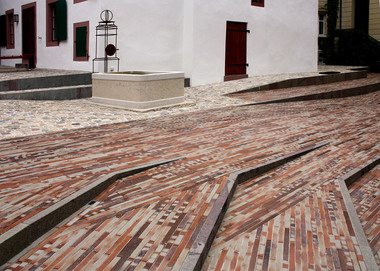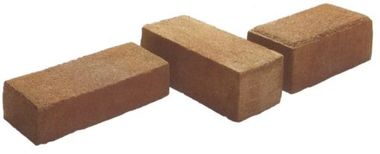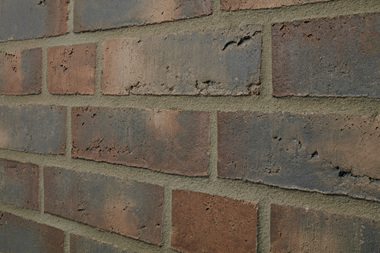Acoustic properties of clay paver surfacing
Clay pavers are primarily used as a construction material where high-quality and architecturally ambitious traffic areas are to be designed. With its natural and warm colours, the natural products fired from domestically sourced clay with above-average resilience enhance the living environment and contrast soothingly with the otherwise uniform grey. But what are the acoustic properties of clay paver surfacing?
According to a survey conducted in 2018 by the German Environment Agency (UBA), 75 % of those questioned feel disturbed and bothered by road traffic in their living environment. From speeds of around 30 km/h, the noise nuisance from cars is mainly caused by the noise of the tyres on the road surfaces. With the increase in hybrid and e-cars, there is greater focus on the nuisance caused by this rolling noise. In residential areas, low-noise construction materials and methods are therefore becoming increasingly important.
Construction reduces tyre-road noise
Long-term noise measurements, scientific studies and construction experience have shown that the sound pressure level of paved surfaces can be lowered considerably with a low-noise construction method. A study commissioned by the Arbeitsgemeinschaft Pflasterklinker e.V. (German Association of Clay Pavers) at Ingenieurgesellschaft Müller-BBM has confirmed these findings.
In contrast to conventional paved surfacing, with low-noise paving construction, the tyre-road noise is reduced directly at the place of noise origin. To minimize the noise nuisance caused by road traffic on clay paver surfacing, basic rules for low-noise paving construction should be followed. In this context, particular importance is attached to the evenness of the surface, choice of paver shape and size, laying patterns, bevelling, joint geometries, height offset and joint filling levels. The surface properties of clay pavers and the joint patterns of the finished paved surfacing therefore have to be optimized.
Optimal: Rectangular pavers in a diagonal bond
In addition, for low-noise paving surfaces only rectangular pavers laid in bonds running diagonal to the main direction of traffic should be used. The width of the joints also plays an important role. Wide pavers and narrow joints have a favourable effect on noise reduction.
The structurally required paving joint is further optimized with regard to acoustic properties if unbevelled pavers are used. To minimize the tyre road noise, road textures should be chosen that minimize tyre vibration and aeroacoustic effects.
The structural design of the paver surfacing also has effects on its noise behaviour. Care should be taken that the surface of the top base course is particularly even, and the height offset of neighbouring pavers does not exceed 1 mm. If unevenness occurs during the service life of the surfacing, this should be eliminated.
New version of the guidelines for noise control on roads
The knowledge that a clearly perceivable reduction in noise can be achieved with optimized paver surfacing compared to conventional wearing courses was taken into account in the new version of the German “Guidelines for Noise Control on Roads (RLS edition 2019)“. The above-mentioned requirements for the construction and sizing of the paving surfaces must be met so that the road wearing course is characterized as “paving with an even surface” to obtain a DSD correction factor of +1.0 dB(A) at a speed of 30 km/h. The current correction factor is therefore 1 dB below that in the edition of 1990, in which a DStrO factor of +2.0 dB(A) was taken for even paved wearing surfaces. The current value lies much closer to those values experienced in practice. Here, however, there remains further potential from an acoustic perspective.
Accordingly, public authorities are called upon to realize low-noise paving construction in noise-sensitive environments with application of the construction methods described, so that in the near future a range of traffic surfaces trafficked over several years are available on which further noise measurements can be conducted to evaluate the durability of the noise reduction effect of paver surfacing.


